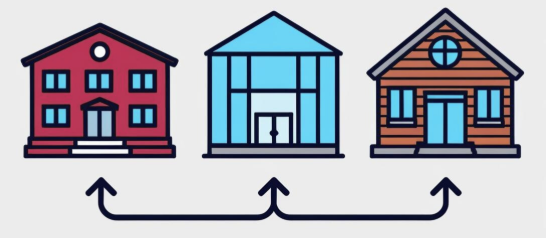New Hampshire is Considering Open Enrollment: What is at stake?
May 23rd, 2025

Currently, New Hampshire lawmakers are debating four bills that would allow any student in New Hampshire to attend any public school, outside of the schools in their local community, in the state. This practice is known as open enrollment.
National special interest groups have been pushing hard for this legislation, including supporters of school choice and vouchers and the American Legislative Exchange Council (ALEC), a conservative lobbying organization that advances far-right legislation in state governments. Open enrollment exacerbates inequities that exist.
Currently, there are four active pending pieces of legislation in New Hampshire related to open enrollment:

This week, Senate Finance will continue budget discussions to decide what happens to open enrollment in the state biennium budget. As of 05/12/25, Senate Finance removed this section of the budget, but Senate Finance discussions are still in process. While in House Education Funding, there will be a work session held on SB 99, a bill that creates open enrollment through CTE agreements.
According to our fiscal analysis of the proposed bills being considered by the NH state legislature, even a small shift in the number of students enrolling in an open enrollment program can cost districts thousands of dollars, forcing cuts to staffing, programs, operations, and, quite possibly, leading to school closure. Over time, this policy dismantles local community schools, often a point of pride and gathering place within their towns and cities.
Here’s what open enrollment legislation would mean for New Hampshire students
-
Public schools could close in small and rural communities. In New Hampshire, public schools are largely funded based on student enrollment numbers. If students transfer from one district to another, funding typically follows them. While this can benefit receiving districts by increasing their funding, it will decrease funding for districts losing students and drive up their Cost Per Pupil. Smaller or rural districts, which already face limited resources, could see a decline in funding, potentially leading to staff reductions, larger class sizes, and cuts to resources and educational offerings. As few as 20 students transferring out of a school in rural New Hampshire could result in the school permanently closing. According to the Education Commission of the States, small and rural districts are especially vulnerable.
-
Open enrollment policies put communities at risk. The movement of students to schools outside their home districts can weaken community ties. Local schools serve as hubs for community meetings, emergency shelters, and often are polling locations. They provide fields and courts for community youth sports and auditoriums for theater. Open enrollment threatens to close schools, and rob communities of the benefits of a local school.
-
Lack of access to transportation exacerbates disparity in opportunity. In most open enrollment policies, transportation remains the responsibility of parents and guardians, meaning low-income families may face greater barriers to accessing other schools. In turn, this policy favors affluent families, resulting in even greater disparity of opportunity for students. Research from the National Education Policy Center shows that the absence of transportation disproportionately limits access for disadvantaged youth and exacerbates existing inequities.
-
Complexities in voting rights and family engagement with the district. Open enrollment complicates the relationship between families and their school districts. When families send their children to schools outside their home districts, they may relinquish their ability to engage in school board elections and local policy-making decisions at their new school. Within their resident district, they may feel less inclined to participate in local school board elections or bond measures, potentially diminishing civic engagement and support for local schools.
-
Straining on resources and classroom overcrowding. In open enrollment, receiving schools may see an increase in enrollment without an equal or corresponding rise in resources, resulting in overcrowded classrooms. Overcrowding can negatively affect the quality of education, as teachers may struggle to provide individualized attention, and resources become stretched thin. This situation can increase teacher stress and burnout, further impacting student learning outcomes. Already, local New Hampshire districts are experiencing significant space issues as enrollment surges. Open enrollment could magnify these issues..
In addition to these listed potential impacts of open enrollment, there are still many unresolved questions about the current proposed open enrollment legislation.
Further Reading & Resources
-
Open Enrollment: What's In the Best Interest of Wisconsin Students, Families, and Public Schools?
-
Fordham Institute: Perceptions and Impacts of Open Enrollment
Have a question? Contact us. Stay in the know and follow us on Facebook, Instagram, and LinkedIn, and join the New Hampshire Education Network (NHEN), our network of New Hampshire parents, educators, business leaders, and community members to stay up to date on the latest developments in education policy.
